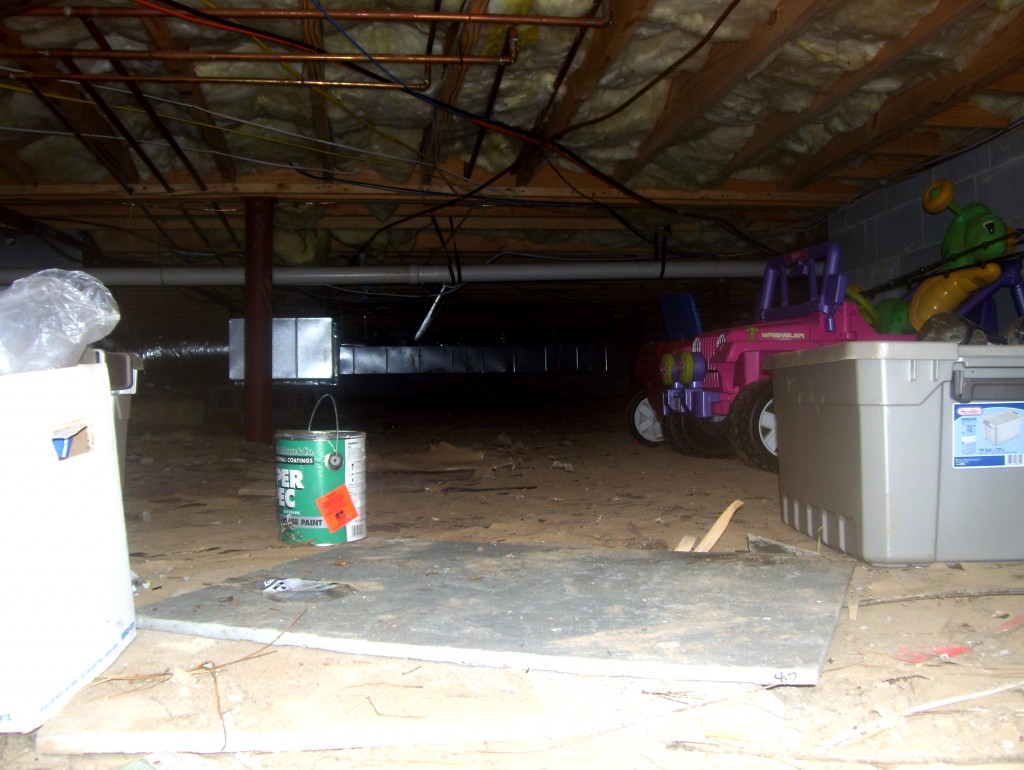FHA loans continue to make up a large part of the finance market for homes that are currently being purchased. I get a lot of questions about FHA rules because they are more strict than conventional loans when it comes to the condition of the home. A Realtor friend asked me recently what the current FHA rules for crawlspaces were, specifically regarding vapor barriers.
I thought I would cover that as well as the general crawlspace requirements necessasry for a home to pass FHA requirements. HUD (Housing and Urban Development) currently has the following guidelines:
- There must be adequate access to the crawlspace– This is usually in the form of an access door on the side of the home. It must be big enough so that a “head and shoulders” inspection is possible. The appraiser must inspect the crawlspace unless entry is obstructed, damage to the property could result, or when a dangerous situation is suspected.
- Minimum crawlspace height should be 18 inches– This is measured from the bottom of the joist and is only a recommendation, however it should not vary so much that entry is inhibited.
- The crawlspace must be free of debris- It is OK to store some items in the crawlspace, however if it is so full that you cannot observe the crawlspace then it will need to be cleaned out.
- The crawlspace must not have excessive moisture or ponding of water– Some slight dampness is natural, however if it exceeds what is normal and/or there is ponding of water this must be corrected. Excessive dampness can cause wood rot and provide a good environment for termites. A vapor barrier is not required if moisture problems do not exist, however if they do then a vapor barrier should be used.
- Crawlspace must have adequate ventilation- There must be positive airflow through the crawlspace so that there is no dead air space. This helps reduce the likelihood of moisture problems.
If you are selling a home you may want to check out the crawlspace to make sure that the home meets HUD/FHA guidelines, since a lot of buyers are using this type of financing. Do you have any other FHA questions? You can leave a message below, or give me a call. If I don’t know an answer immediately I will find out and get back with you.
If you have any real estate appraisal related questions you can call me at 205.243.9304, email me, or connect with me on Facebook., Twitter, or Youtube.

Question about appraisals of an older home: I am trying to sell my home built in approx 1920-1930. The crawl space has the sewer line, but nothing else. There is 12 inches worth of space between ground and he floor joice. Is there any rule that can push me through to pass this part being that my house is so old? I’m not sure that back then they considered the space needed. I found a clause in the manual about historic homes, but not sure if it applies to me. First offer in 2 years, so I do not want the deal to die based of 6 inches.
As far as I know there are no special exceptions for historical homes when it comes to crawlspaces. There rule is 18 inches and I have never known them to overlook this. This rule should not keep a buyer from getting a conventional loan however.
Nice job, Tom. Well stated and helpful.
Thanks Ryan.